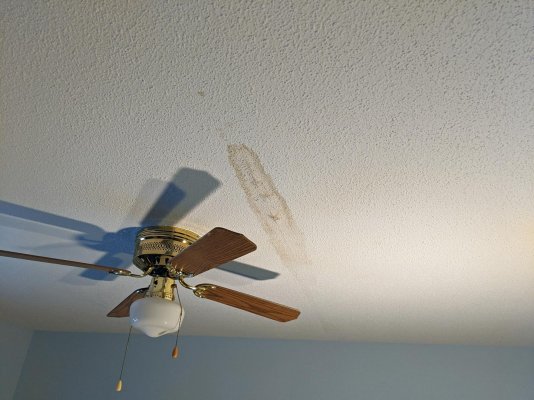My mother had a nose bleed and it was assumed to be related to the house being too dry. The doctor told me to make sure I had enough humidity. I have set up three humidifiers.
The warm moist air seems to be rising up to the attic.
The outside humidity is 16% with a temperature of 30.
The attic is 70% humidity with a temperature of 48.
The second floor is around 40% humidity with a temperature of 70.
The first floor where the humidifiers are running is between 38% and 45% depending on the room and a temperature of 74.
In the attic I have one layer of fiberglass insulation between the floor joists with the vapor barrier on the bottom. On top of that I have a layer of fiberglass insulation with no vapor barrier. As I understand things that is the correct way to do it.
Does it make sense that the warm air is rising?
I think that relative humidity is related to temperature. Is that the way it works?
That is would the humidity number be higher for the same amount of moisture if the temperature were lower from point A to point B?
I have poor ventilation in the attic as I have mentioned in other posts. I have a ridge vent and a gable exhaust fan on one end and an inadequate gable intake on the other end. The fan is not running now since it is controlled by temperature.
The idea occurred to turn the fan on to see what that does. But if I have to lower the temperature setting enough to make it run, it will probably run all the time or may not even go that low.
I suppose I could try to hire an electrician to install a humidity sensor to control the fan as well as temperature.
At this point I have to give priority to my mother since she had to be rushed to the ER with a nose bleed last week.
The warm moist air seems to be rising up to the attic.
The outside humidity is 16% with a temperature of 30.
The attic is 70% humidity with a temperature of 48.
The second floor is around 40% humidity with a temperature of 70.
The first floor where the humidifiers are running is between 38% and 45% depending on the room and a temperature of 74.
In the attic I have one layer of fiberglass insulation between the floor joists with the vapor barrier on the bottom. On top of that I have a layer of fiberglass insulation with no vapor barrier. As I understand things that is the correct way to do it.
Does it make sense that the warm air is rising?
I think that relative humidity is related to temperature. Is that the way it works?
That is would the humidity number be higher for the same amount of moisture if the temperature were lower from point A to point B?
I have poor ventilation in the attic as I have mentioned in other posts. I have a ridge vent and a gable exhaust fan on one end and an inadequate gable intake on the other end. The fan is not running now since it is controlled by temperature.
The idea occurred to turn the fan on to see what that does. But if I have to lower the temperature setting enough to make it run, it will probably run all the time or may not even go that low.
I suppose I could try to hire an electrician to install a humidity sensor to control the fan as well as temperature.
At this point I have to give priority to my mother since she had to be rushed to the ER with a nose bleed last week.

